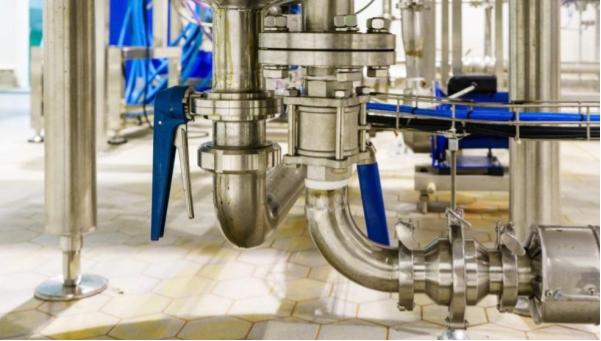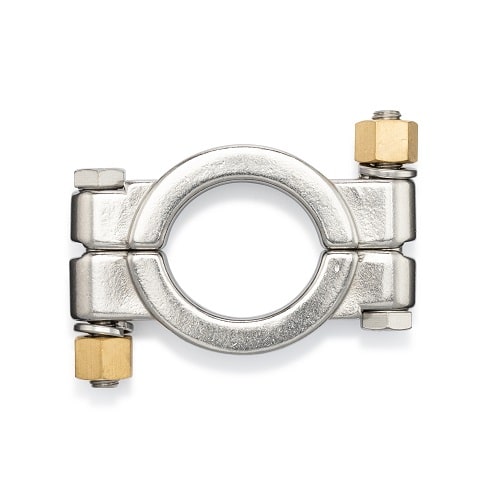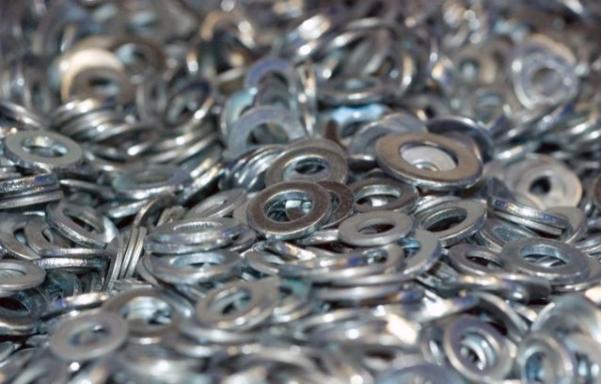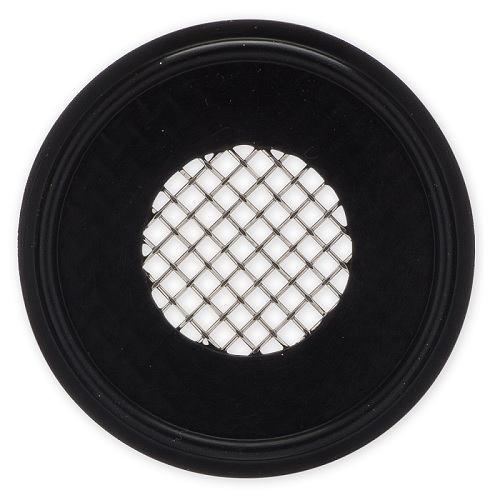Types of Gasket Tri-Clamp Fittings Used in Brewing
Brewing is a fascinating process. Every element that goes into that fizzy glass, from the raw materials to the tanks and pipes used, is awe-inspiring.
It goes right down into the detail: Large tanks and pipes are what people think of when they picture a brewery, but it is the small pieces that keep the cogs turning, literally.
Of these, sanitary fittings are essential. They join up the pipes and tanks, making it possible to connect different sections of process lines.
One significant example of these small, but significant, precision equipment is the tri-clamp gasket.
A better understanding of what it is, how it works, and the options available will help you choose the best fitting for your brewery.
Curious?
This guide has all you need to know.
What are Tri-Clamp Fittings and Why Do They Matter?
Also known as tri-clover fittings, these sanitary fittings are used to make a sanitary connection between flanges or other equipment and surfaces.
Tri-clamp fittings are made up of two flanged ends—also referred to as ferrules, plus a gasket and a clamp to secure the connection.
It creates a leak-proof seal in between a tri-clamp connection.
The gasket’s purpose is to create a leakproof seal in between tri-clamp connections.
First, What Are Sanitary Fittings?
Sanitary fittings, of which gasket tri-clamp fittings are a part, are small connecting plumbing pieces.
You’ve probably seen them in your kitchen sink, bathroom, or washbasins—all plumbing connections are sanitary fittings.
They’re also used in brewing and other food-grade processors because they are easy to clean. Although the ones used in food-grade processors are usually made of steel because it’s easy to clean.
They can be dismantled or disassembled partially or fully for cleaning ease.
The steel is normally polished to remove any pockets where bacteria can hide. It’s also not tightly threaded for the same reason.
What Is a Sanitary Connection?
These are connections made between two pipes, or between pipes and larger equipment such as tanks.
In a brewery, sanitary connections are used between pipes or between a brewing tank and the pipes used to feed into the tank.

Tri-Clamp Gaskets
Sanitary tri-clamp fittings are popular in food-grade processors for ease of disassembly.
They are also easy to use since they have a clamp that can be tightened by hand—our recommended way of installation.
Overly tightening using a wrench on any other tool poses a few risks:
- The gasket can move out of place and bulge, creating a pocket for bacteria to form.
- A gasket moving out of place causes leaks, which defeats the purpose of the gasket.
- It could damage the gasket altogether.

Cleaning Ease
You’ve probably noticed that the topic of hygiene keeps coming up.
That’s because sanitary fittings are used in sensitive industries such as breweries, dairies, food-grade processing, and pharmaceutical production.
As such, they’re designed for the highest standards of cleanliness.
Sanitary fittings used in food grade and pharmaceutical processors are subject to 3-A cleanliness standards.
They are important to the design of all gasket tri-clamp fittings.
3-A Standards
Created by 3-A Sanitary Standards Inc., 3-A standards are concerned with the design of food and beverage processing equipment for cleaning ease.
They ensure that equipment is designed in such a way that product residue cannot remain or hide where it will fester and cause harmful bacteria.
Ease of cleaning is classified as:
- Ability to clean in place with industrial detergents or by flushing water through piping or equipment.
- Compatibility of materials used with common industrial detergents. This is to ensure the materials can withstand the strength of the detergent.
- The ability to be cleaned out of place through disassembly or dismantling.
- If the internal angles are large enough to prevent pockets where residue might hide. This is why most elbows have curved corners.
- Minimal cracks and crevices in equipment, where bacteria and product residue might hide.
Gaskets
A tri-clamp gasket is a ring-shaped seal used in between flange joints and other joining surfaces to prevent leaks.
Think of your kitchen sink: There is most likely a rubber black ring where the strainer and the sink join. That’s a gasket.
Remove it and your floor will be soaking wet.
Tri-clamp gaskets serve the same purpose—they seal potential leaks.
The only difference is that the stakes are higher when used in brewing equipment where leakages at flange joints can be costly and dangerous.
Another risk of improperly-joined flange points is friction fire.
When properly fixed, gaskets can withstand various temperatures and pressures. They’re also made for tubing that ranges from ½” to 12” in outer diameter.
Most gaskets fall into three categories:
-
Non-Metallic
Made from graphite, rubber, Teflon, or Polytetrafluoroethylene (PTFE).
They are used in low-pressure and low-temperature processors.
Those made from rubber are ideal for food and beverage processing, while PTFE gaskets do well for chemical processing.
-
Metallic
Made from soft iron, low carbon steel, and stainless steel.
They can withstand high pressure and high temperatures of up to 900°C. As such, they require high tension bolting.
-
Composite
These are made from a mixture of metallic and non-metallic components.
Their use is widespread across a range of pressures and temperatures, owing to their combined properties.
Gaskets can also be classified according to construction as jacketed, solid, or spiral-wound.
- Jacketed gaskets are made of rubber or plastic and coated with metals to increase their durability and resistance to pressure and corrosion.
- Solid gaskets are usually metallic. They require high compression to form a seal and are thus used on surfaces that are harder than the metal.
- Spiral-wound gaskets are made by combining rubber or plastic with metal in a spiral wound fashion. This construction makes them able to withstand high temperatures and pressure.
Our tri-clamp gaskets are made from Buna (Nitrile), Ethylene Propylene (EPDM), Teflon, and FKM (Viton).
Buna and EPDM gaskets are ideal for food-grade processors and brewing and are both FDA-approved.

Buna (Nitrile)
Popularly known as Buna N, Nitrile (nitrile butadiene rubber) is a synthetic latex-free rubber that is popular in manufacturing and for making rubber gloves for those allergic to latex.
Buna N has high tensile strength and shows resistance to many substances including oils and alcohol making it ideal for brewing. It’s not easily corroded by fuels and hydraulic fluids either.
It’s used in manufacturing for reasons such as:
- It has the same surface properties as Teflon meaning that substances don’t stick to it. It’s thus ideal for hygiene purposes and to ensure product residue doesn’t stick to gaskets.
- For those with latex allergies, food and beverage tainted with latex can have dire consequences. Buna N eliminates this risk.
- Nitrile doesn’t easily tear so your gaskets won’t need constant replacing.
- Can withstand a temperature range from -35°F to 250°F

EPDM
Ethylene Propylene Diene Monomer or EPDM in short is also a synthetic latex-free kind of rubber. It’s commonly used in manufacturing, weather-stripping, garden hoses, flat roofing, and electrical insulation. However, it’s unsuitable for petroleum manufacturing since it would disintegrate.
Like Buna N, EPDM also shows resistance to alcohol meaning it’s also ideal for your brewing needs.
EPDM has some unique properties that make it ideal for use in manufacturing:
- It’s easily molded so it can be formed into anything hence its popularity in gaskets.
- Once it’s molded and set in its mold, it’s not easily reformed so its use in high temperatures won’t reshape it, cause it to melt, or move out of place.
- It can withstand corrosion and oxidation so product residue won’t damage it or remain on it.
- Can withstand a wide temperature from -65°F to 300°F.
- As an added bonus, it can be recycled.
Sanitary Gasket Material & Reference Guide
| Gasket | Temperature Range | Recommended Usage | Not Recommended | Industry | Certification Approval |
|---|---|---|---|---|---|
| Buna (Nitrile) | Standard: -35°F to 250°F (-37°C to 121°C) | Water, Oils, Fuels | Ketones, Strong Acids, Sunlight, Ozone, Weathering | Food & Beverage | FDA Approved |
| EPDM (Ethylene Propylene) | Standard: -65°F to 300°F (-54°C to 149°C) | Sunlight, Weathering, Hot Water, Steam, Select Acids/Bases, Alcohols | Oils, Fuels | Bio-Pharmaceutical, Food & Beverage, Drinking Water | USP Class VI Tested, FDA Approved |
| PTFE (Teflon®) | Standard: -100°F to 450°F (-74°C to 232°C) | Chemical, Heat, Pressure Applications | Stretching, Elasticity | Chemical Processing | USP Class VI Tested, FDA Approved |
| FKM (Viton®) | Standard: -15°F to 437°F (-26°C to 222°C) | Vacuum, Most Acids / Chemicals, Oils, Fuels | Ketones, Ammonia, Hot Water / Steam | Chemical Processing | USP Class VI Tested, FDA Approved |
Tri-Clamp Gasket Fittings for Your Brewing Needs
A lot goes into creating a successful brewing process, everything from the tubing to the gaskets must do their job perfectly, or your company may incur costly expenses through system downtime or spoiled product.
Tri-clamp gaskets may be one of the smallest sanitary fittings in your outfit, but they are certainly one of the most essential. Thus, getting the right piece, with the right qualities is a must.
Our tri-clamp gasket fittings are excellent sealants that will serve you well.
If you are interested in brewing and other food and beverage processing, we have all the sanitary fittings that you need.
Contact us today for tri-clamp fittings and more fittings.
Have a look at our products catalog for a more comprehensive guide on all our products.
